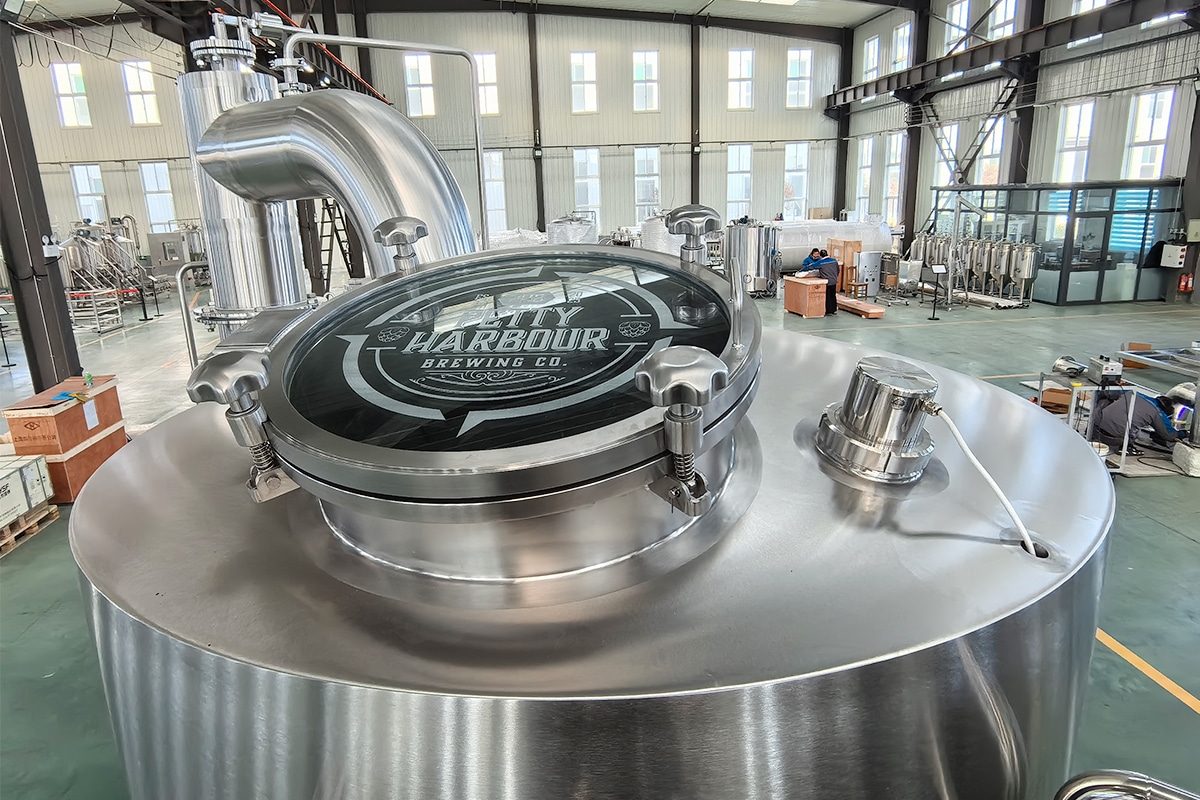
What Equipment Is Needed To Build A Brewery?
Embarking on the journey to build a brewery is an exciting endeavor filled with passion, creativity, and a desire to brew great beer. When you venture into the world of brewing, knowing the full range of equipment you’ll need is crucial to turning your dreams into reality. From complex brewhouse equipment to basic fermenters, each piece of equipment plays a vital role in shaping the brewing process and the quality of the final product.
In this comprehensive guide, we’ll explore the essential tools and machinery needed to build a brewery from the ground up, covering everything from the basics of brewing vessels to the intricacies of packaging and distribution. Whether you’re a passionate homebrewer looking to expand, or an aspiring entrepreneur entering the world of craft beer, understanding the equipment you’ll need is the first step to building your dream brewery.
Complete Guide
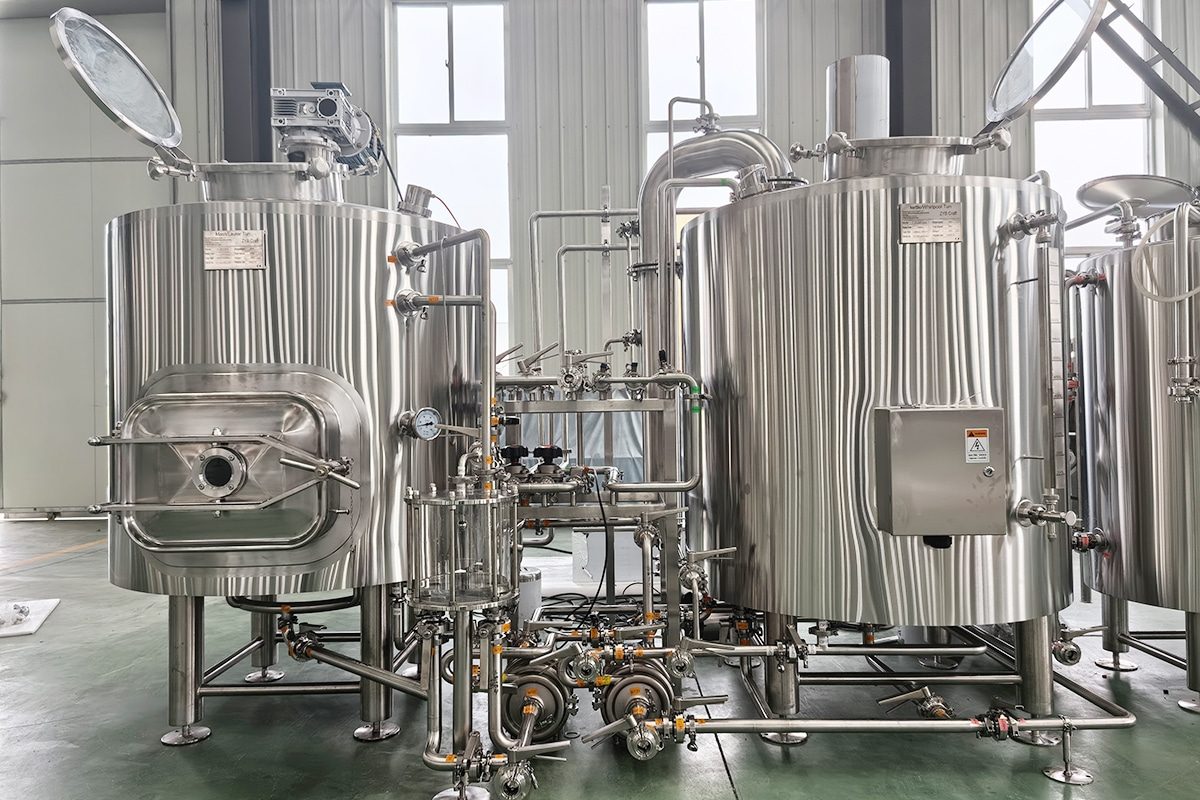
Building a brewery starts with the heart of the operation: the brewhouse. This is where the alchemy of brewing unfolds, requiring a variety of equipment to facilitate every step of the process. Let’s dive into the basic components of brewhouse:
Mash Tun
The mash tun is where malted grains are mixed with hot water to trigger an enzymatic reaction that converts starch into fermentable sugars. Choosing a mash tun with good insulation can maintain consistent temperatures during the mashing process. Additionally, consider features like false bottoms or manifolds for high-efficiency filtration and spray arms for even distribution of hot water.
Lauter Tun
After mashing, the wort needs to be separated from the spent grain solids through a process called filtration. The lauter tun is equipped with a false bottom or screen to facilitate this separation while allowing the wort to flow freely. Look for a lauter tun with adequate drainage and raking to assist in the filtration process.
Brew Kettle
Once the wort is separated from the grains, it is transferred to the brewing kettle and boiled. The brew kettle is where hops are added and the wort is boiled to sterilize it and extract the bitterness and flavor from the hops. Choose a brew kettle with adequate capacity, sturdy construction, and features such as tangential inlets for efficient vortex and condensate pipes for steam management.
Whirlpool Tun
After boiling, the wort is transferred to the whirlpool tun, where it undergoes the whirlpool process, which separates the hop fragments and protein solids from the liquid. A well-designed whirlpool tun will have a tangential inlet to create a whirlpool effect, and a tapered bottom to promote debris collection in the center of the container.
Hot Liquor Tank (HLT)
The hot liquor tank holds hot water for mashing in, sparging, and cleaning purposes. Choosing an HLT with enough capacity can handle the brewery’s hot water needs as well as features like insulation and temperature control to maintain precise water temperatures throughout the brewing process.
Cold Liquor Tank (CLT)
Similar to the HLT, the cold liquor tank holds cold water for cooling wort, chilling fermenters, and other brewery processes. Consider features such as insulation, glycol jacketing, and temperature control to ensure that the cold liquor tank can efficiently supply cold water as needed.
Wort Grant
The wort grant is a vessel that acts as a buffer between the lauter tun and the brew kettle, allowing for smoother and more controlled wort transfer. Look for a wort grant with a sight glass or level indicator to monitor wort levels and features like a pump bypass valve for precise flow control.
Heat Source
The heat source for the brew house can vary depending on the brewery’s size and setup. Common options include steam boilers, direct-fire burners, or electric heating elements. Choose a heat source that suits your brewery’s needs in terms of efficiency, scalability, and safety compliance.
Piping and Valves
Piping and valves are the arteries and veins of the brew house, facilitating the flow of liquids between vessels and controlling process parameters such as flow rate and temperature. Invest in high-quality stainless steel piping and sanitary valves to ensure hygienic and efficient operation.
Brewhouse Automation
In modern breweries, automation plays a crucial role in optimizing brewing processes and maintaining consistency in product quality. Brewhouse automation systems can control mash temperatures, regulate flow rates, monitor brewing parameters, and more. Consider integrating automation into your brew house to enhance efficiency, repeatability, and overall control over the brewing process.
The brewhouse is the heart of any brewery, and every piece of equipment plays a vital role in transforming ingredients into delicious beer. By carefully selecting and configuring the right equipment for your brewery’s needs, you can set yourself up for success in the craft beer world.
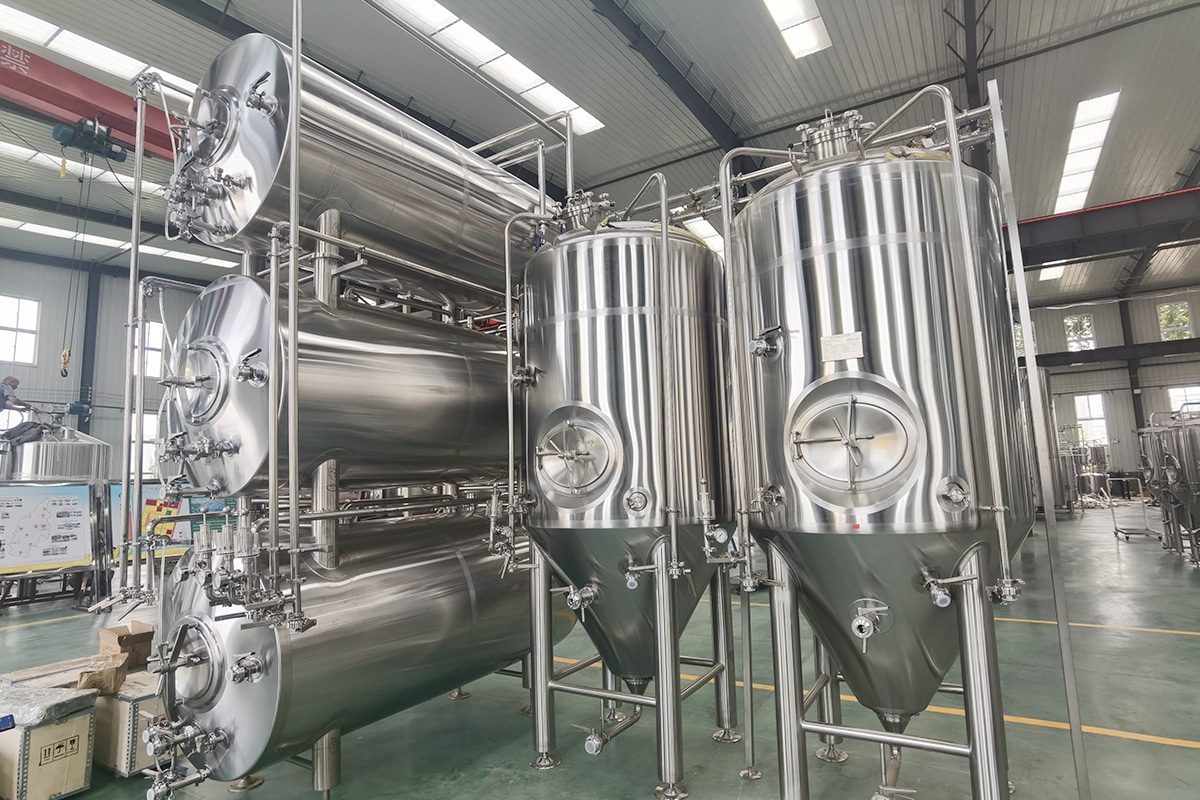
Fermentation Equipment
Fermentation is the magical part of the brewing process as yeast transforms wort into beer. To facilitate this critical process and ensure optimal conditions for yeast health and activity, breweries require specialized fermentation equipment. Let’s explore the basic components of fermentation equipment:
Fermentation vessels, also known as fermenters or fermentors, are vessels in which wort is fermented into beer by yeast. These vessels come in various shapes, sizes, and materials, with stainless steel being the most common due to its durability and ease of cleaning. Conical fermenters are popular for their ability to collect yeast and sediment at the bottom, making yeast harvesting and beer clarification easier. Additionally, consider features such as pressure rating, insulation, and glycol jacketing for precise temperature control during fermentation.
Glycol Chiller
Maintaining consistent fermentation temperatures can help produce high-quality beer with predictable flavor and aroma. The glycol chiller is a refrigeration device that circulates glycol through a jacket or coil in a fermentation vessel, allowing breweries to precisely control fermentation temperatures. Choose a glycol chiller with sufficient cooling capacity to meet the needs of your brewery’s fermentation vessel, and consider features such as energy efficiency and ease of maintenance.
Yeast Propagation System
Only healthy yeast can ferment successfully, and yeast propagation systems allow brewers to grow and propagate yeast cultures for use in fermentation vessels. The system usually consists of a yeast propagation tank, a stirring plate, and a nutrient medium for yeast growth. Choose a yeast propagation system that fits the size of your brewery and your yeast management needs to ensure continued yeast health and vitality for optimal fermentation performance.
Fermentation Control System
The fermentation control system automatically adjusts fermentation temperature, pressure, and other parameters to ensure optimal conditions for yeast activity and beer production. These systems may include temperature controllers, pressure transmitters, and programmable logic controllers (PLCs) to automate the fermentation process and maintain optimal conditions for yeast activity. Look for a fermentation control system with an intuitive interface, remote monitoring capabilities, and integration with other brewery automation systems.
Exhaust Pipes And Airlocks
During active fermentation, the yeast produces carbon dioxide gas that needs to be safely vented from the fermentation vessel to prevent overpressure and potential explosion. Vent pipes and airlocks are used to release excess gas while preventing contaminants from entering the container. Choose a vent or airlock that fits the size of your fermentation vessel, and consider using a vent bucket or container to collect excess foam and prevent messy spills.
Good fermentation equipment helps breweries produce high-quality beer with consistent flavor profiles and fermentation performance. By investing in fermentation vessels, glycol coolers, yeast propagation systems, fermentation control systems, and safety features such as exhaust pipes and airlocks, breweries can create optimal conditions for yeast activity and fermentation success. Whether you have a small craft brewery or a large production facility, choosing the right fermentation equipment can help achieve brewing excellence.
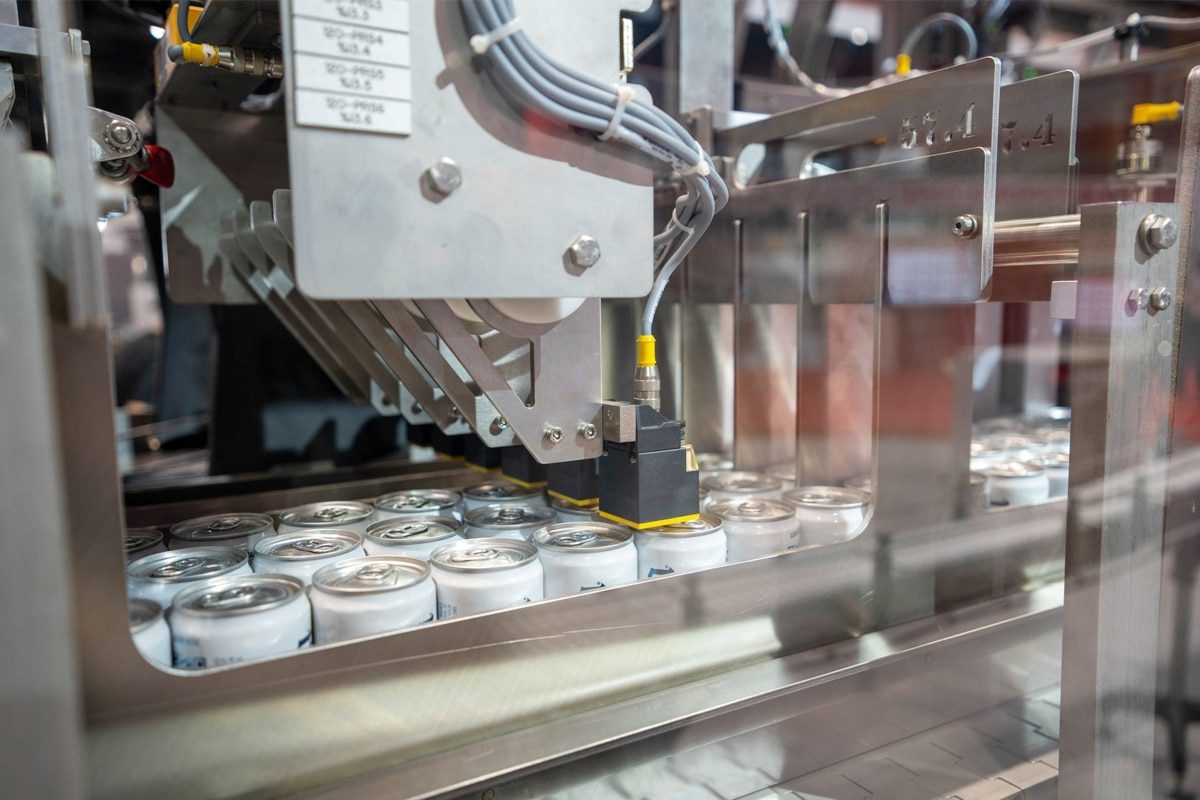
Packaging Equipment
Once the brewing process is complete and the beer is fermented to perfection, it’s time to package it for distribution and enjoyment. Packaging equipment plays a critical role in ensuring that beer is safely and efficiently packaged into kegs, bottles, or cans. Let’s explore the essential components of packaging equipment:
Kegs or Bottles
The choice between kegs and bottles depends on factors such as production volume, distribution channels, and consumer preferences. Kegs are popular among breweries supplying draft beer to bars and restaurants, offering convenience and cost-effectiveness for large-scale distribution. Bottles, on the other hand, are preferred by breweries targeting retail consumers and offering packaged beer for off-premise consumption. Choose between standard glass bottles, PET bottles, or cans based on your brewery’s branding, marketing strategy, and packaging requirements.
Keg Washer
Cleaning and sanitizing kegs is essential to ensure that beer remains fresh and free from contaminants during storage and distribution. Keg washers are automated machines that clean and sanitize kegs using a combination of detergent, hot water, and sanitizer solutions. Look for keg washers with multiple cleaning cycles, adjustable cleaning parameters, and compatibility with various keg sizes and styles.
Bottle Filler
For breweries packaging beer in bottles, a bottle filler is an essential piece of equipment that accurately fills bottles with beer while minimizing oxygen exposure and foaming. Bottle fillers come in various configurations, including gravity fillers, counter-pressure fillers, and vacuum fillers. Choose a bottle filler that suits your brewery’s production volume, packaging format, and filling accuracy requirements.
Labeling Machine
Once bottles or kegs are filled with beer, they need to be labeled with branding, product information, and regulatory labels. Labeling machines, also known as labelers or label applicators, automate the process of applying labels to packaging containers. Consider factors such as labeling speed, label placement accuracy, and compatibility with different label sizes and shapes when selecting a labeling machine for your brewery.
Capping or Corking Machine
For breweries packaging beer in bottles, a capping or corking machine is needed to seal the bottles after filling. Capping machines apply caps or crowns to bottle tops using mechanical or pneumatic mechanisms, ensuring a tight seal to prevent leaks and maintain carbonation. Corking machines, on the other hand, insert cork stoppers into bottles, typically used for packaging specialty beers like cork-finished Belgian ales or barrel-aged brews. Choose a capping or corking machine that is compatible with your bottle format, cap/cork type, and production volume.
Packaging equipment helps breweries safely, efficiently, and beautifully package beer for distribution and consumption. Whether you’re filling kegs for draft distribution or bottling/canning beer for retail sale, investing in quality packaging equipment ensures that your beer reaches consumers in optimal condition, reflecting your brewery’s commitment to quality and excellence. Choose equipment that meets your brewery’s production needs, packaging formats, and budget constraints to streamline packaging operations and maximize efficiency.
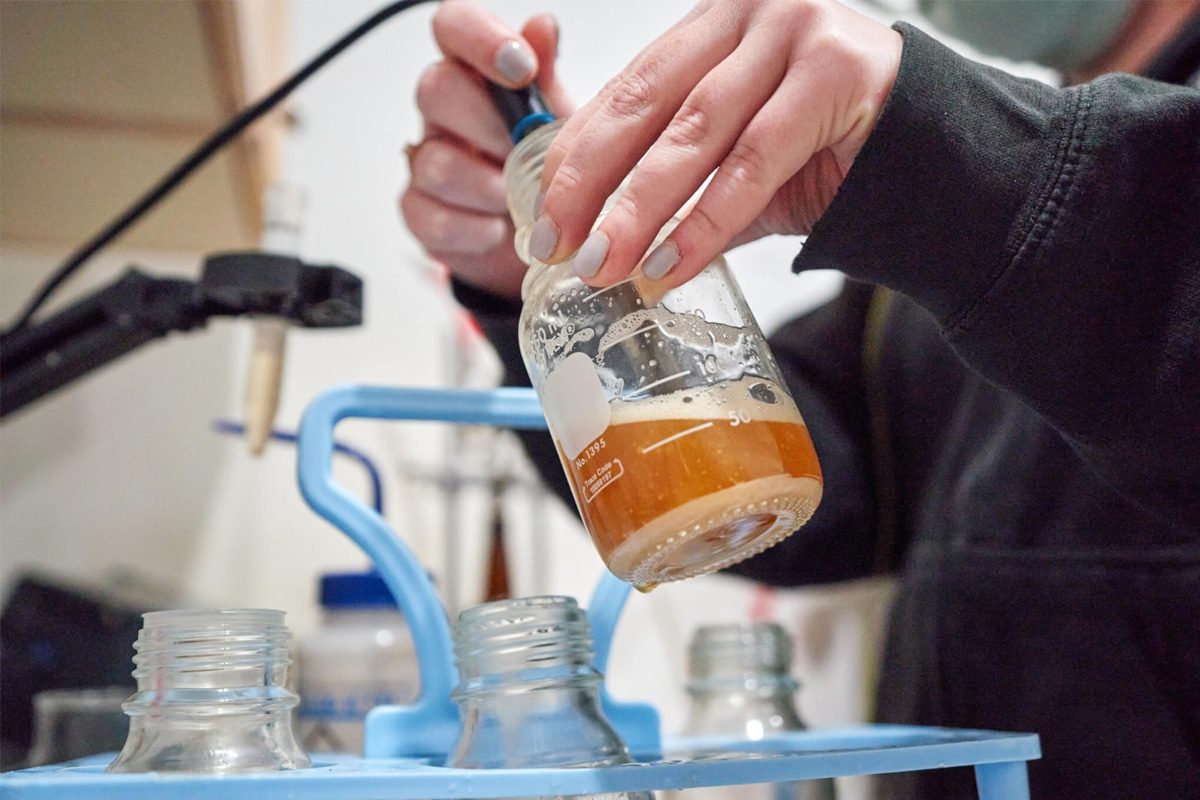
Quality Control and Laboratory Equipment
Ensuring consistent quality and flavor in beer production requires rigorous testing and analysis throughout the brewing process. Quality control and laboratory equipment play a vital role in monitoring key parameters and identifying any deviations that may impact the final product. Let’s explore the essential components of quality control and laboratory equipment for breweries:
Laboratory Setup
The well-equipped laboratory helps in conducting various tests and analyses to monitor beer quality. The typical laboratory setup for a brewery may include a dedicated space equipped with laboratory benches, sinks, storage cabinets, and safety equipment such as eyewash stations and fire extinguishers. Additionally, invest in laboratory-grade glassware, pipettes, beakers, and other equipment needed for sample preparation and analysis.
Microbiological Testing
Microbiological testing can help detect and identify microbial contaminants that may affect beer quality and shelf life. Common microbiological tests conducted in breweries include yeast and bacteria counts, wild yeast and mold identification, and microbiological plating to assess sanitation effectiveness. Invest in equipment such as incubators, microscopes, agar plates, and microbial culture media to perform microbiological testing in-house.
Chemical Analysis
Chemical analysis helps breweries monitor key parameters such as pH, acidity, bitterness, alcohol content, and sugar concentration throughout the brewing process. Equipment for chemical analysis may include pH meters, titration kits, spectrophotometers, refractometers, and density meters. These tools allow brewers to accurately measure and adjust brewing parameters to achieve desired flavor profiles and product consistency.
Carbonation Tester
Carbonation levels significantly impact beer flavor, mouthfeel, and overall consumer experience. A carbonation tester, also known as a carbonation meter or carbonation tester, measures the amount of dissolved carbon dioxide (CO2) in beer samples. This equipment helps brewers ensure that beer is carbonated to the appropriate level for its style and packaging format, whether it’s draft beer, bottled beer, or canned beer.
Dissolved Oxygen Meter
Oxygen is both a friend and foe in brewing, playing a crucial role in yeast metabolism during fermentation but also contributing to beer oxidation and off-flavors when present in excess. A dissolved oxygen meter measures the amount of dissolved oxygen in beer samples, allowing brewers to monitor oxygen levels throughout the brewing process and minimize oxidation risk. Choose a dissolved oxygen meter with high accuracy and reliability for precise control over oxygen levels in beer.
Sensory Evaluation Tools
Sensory evaluation is an essential aspect of quality control, allowing brewers to assess beer flavor, aroma, appearance, and mouthfeel. Sensory evaluation tools may include tasting panels, sensory evaluation kits, aroma kits, and flavor wheels to guide descriptive analysis. Additionally, invest in training programs and workshops to develop sensory skills among brewery staff and ensure consistency in sensory evaluation practices.
Quality control and laboratory equipment help breweries monitor beer quality, identify potential problems, and maintain consistency in product quality and flavor. By investing in a well-equipped laboratory and the necessary testing equipment, breweries can ensure that their beer meets the highest standards of quality and consumer satisfaction. Whether conducting microbiological testing, chemical analysis, or sensory evaluation, quality control measures are critical at every stage of the brewing process to deliver exceptional beer to consumers.
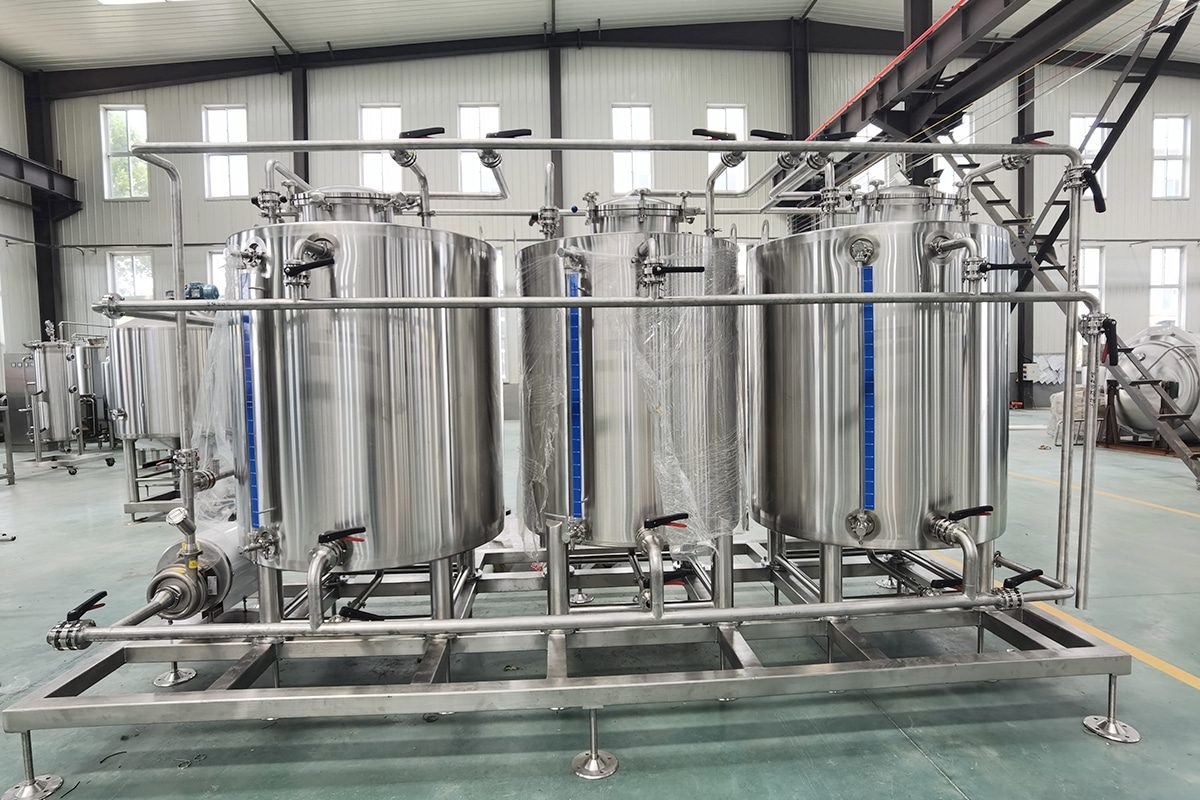
Cleaning and Sanitization
Maintaining a clean and hygienic brewing environment ensures the production of safe, high-quality beer. Proper cleaning and sanitizing procedures, coupled with appropriate equipment, can prevent contamination and odors in beer production. Let’s explore the key components of cleaning and sanitization equipment for breweries:
Cleaning Chemicals
Effective cleaning chemicals are the backbone of brewery sanitation, capable of removing stubborn soils, organic residues, and microbial contaminants from brewing equipment and surfaces. Common cleaning chemicals used in breweries include alkaline cleaners for general cleaning, acid cleaners for descaling and passivation, and oxidizing agents like peracetic acid for sterilization. Choose cleaning chemicals that are formulated specifically for brewery equipment and approved for use in food and beverage production to ensure safety and effectiveness.
Clean-in-place (CIP) systems are automated cleaning systems designed to clean and sanitize brewery equipment in place, without the need for disassembly or manual scrubbing. CIP systems typically consist of tanks, pumps, spray balls, and piping connected to brewery vessels and pipelines. During a CIP cycle, cleaning solutions are circulated through brewery equipment at controlled temperatures and flow rates, followed by a rinse cycle to remove cleaning residues and sanitizing agents. Invest in a CIP system that is tailored to your brewery’s equipment layout and production volume, with programmable controls for customizable cleaning cycles and efficiency.
Brushes and Scrubbers
Manual cleaning tools such as brushes and scrubbers are essential for removing stubborn residues and deposits from brewery equipment and surfaces that may not be reached by CIP systems alone. Brushes come in various sizes and shapes, including tank brushes, keg brushes, and pipe brushes, to effectively clean different types of equipment and pipelines. Scrubbers and scouring pads are useful for tackling tough stains and buildup on stainless steel surfaces. Choose brushes and scrubbers made from durable materials like nylon or stainless steel bristles, with ergonomic handles for comfortable use and effective cleaning.
Cleaning and disinfecting equipment helps maintain a clean and hygienic brewing environment and ensures the production of safe and high-quality beer. By investing in effective cleaning chemicals, CIP systems, and manual cleaning tools like brushes and scrubbers, breweries can implement robust sanitation practices to prevent contamination, off-flavors, and microbial spoilage in beer production. Regular cleaning and sanitization procedures, supported by the right equipment and protocols, are critical for brewery success and consumer confidence in the products they produce.
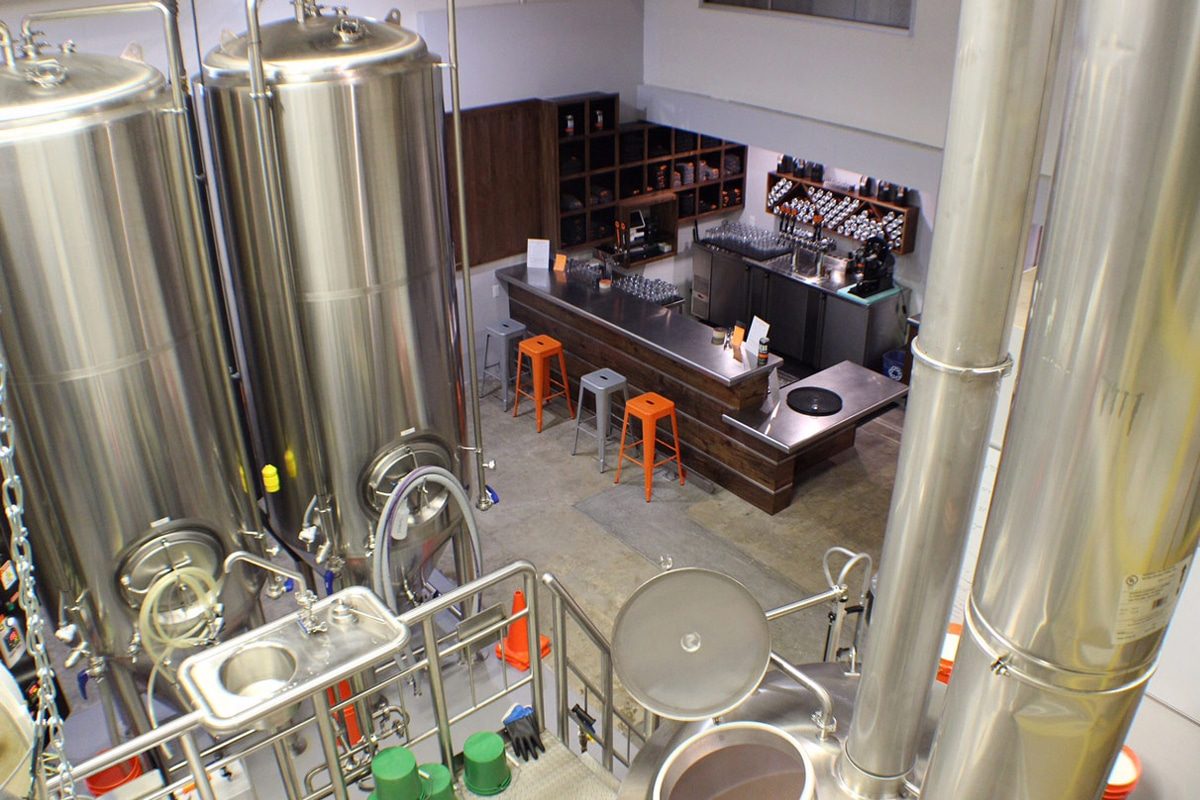
Utilities
Building a brewery requires more than just brewing equipment. It also requires establishing the necessary utility systems to support an efficient and safe brewing operation. Let’s explore the key utility systems needed to build a brewery:
Water Treatment System
Water is a key ingredient in the brewing process, affecting everything from mash pH to hop utilization and yeast health. Installing a water treatment system ensures that the brewery receives clean, stable water with the mineral content needed for brewing. Water treatment systems may include filtration systems, reverse osmosis (RO) systems, water softeners, and dechlorination equipment. By treating brewing water, breweries can optimize their brewing processes and consistently produce high-quality beer.
Steam Boiler or Heating System
Many breweries rely on steam for a variety of brewing processes, including heating brew kettles, mash tuns, and hot liquor tanks, as well as cleaning and sanitizing equipment. A steam boiler or heating system produces steam through the combustion of a fuel (such as natural gas, propane, or biomass) or an electric heating element. Selecting a steam boiler or heating system with sufficient capacity can meet the brewery’s steam needs and ensure reliable operation of the entire brewing process.
Air Compression System
Compressed air is used for a variety of purposes in breweries, including operating pneumatic valves, powering pneumatic pumps, and providing aeration during fermentation. Installing a compressed air system ensures your brewery has a reliable and consistent source of compressed air for your brewing operations. Select a compressor system with sufficient capacity to meet your brewery’s air needs, and consider factors such as air quality, filtration, and pressure regulation for optimal performance.
Electrical System
Electricity powers a variety of brewery equipment, from pumps and motors to lighting and control systems. The brewery’s electrical system should be designed to comply with local electrical codes and standards and have sufficient capacity to support the brewery’s power needs. When designing and installing electrical systems for your brewery, consider factors such as voltage, phase, and electrical load distribution. Additionally, invest in a backup power solution, such as a generator or uninterruptible power supply (UPS), to minimize downtime during an outage.
Utilities are an important part of a brewery’s infrastructure, providing the necessary water, energy, and support systems to facilitate brewery operations. By investing in water treatment systems, steam boilers or heating systems, compressed air systems, and electrical systems, breweries can ensure efficient and reliable operations while maintaining product quality and consistency. Whether designing a small craft brewery or a large-scale production facility, careful planning and investment in brewery utilities contribute to successful brewing.
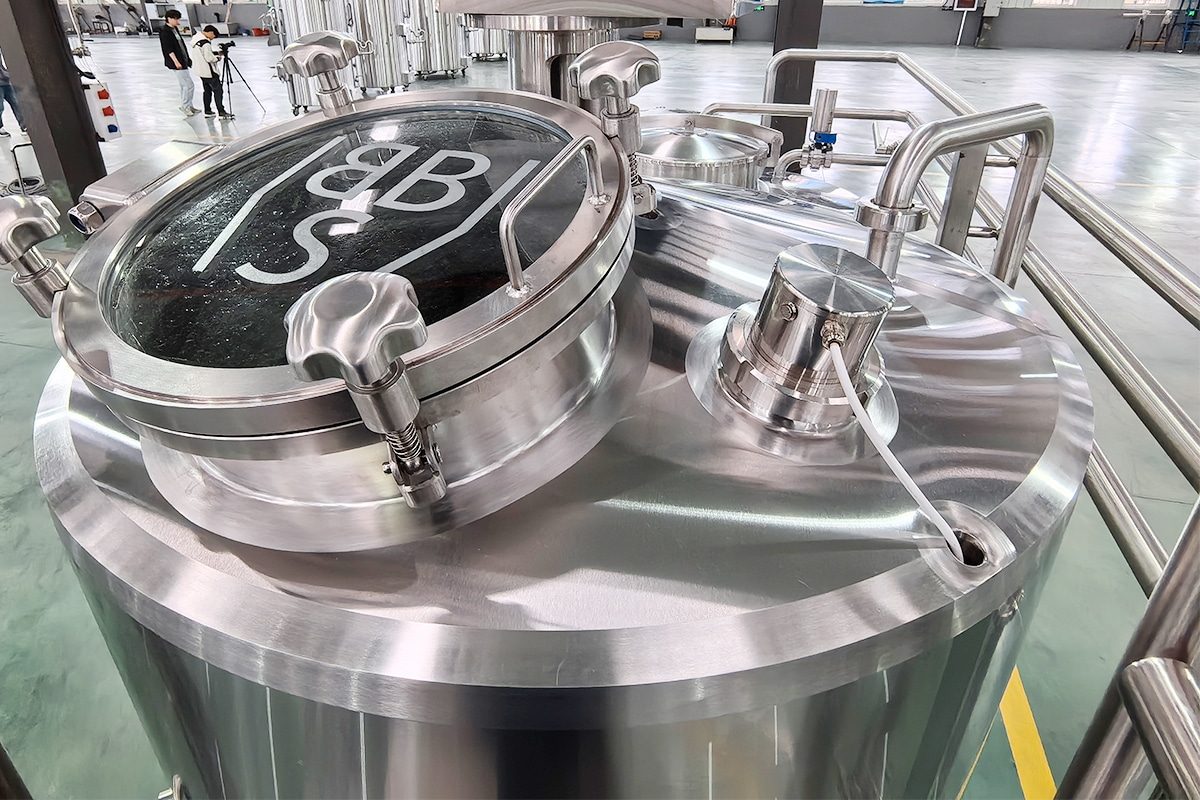
Summary
Building a brewery requires careful consideration of a wide range of equipment to ensure efficient brewing operations and consistent beer quality. From the brew house to packaging and utilities, each component plays a vital role in bringing the brewing process to life. In the brewhouse, essential equipment such as mash tuns, fermenters, and brew kettles form the foundation of brewing operations, while packaging equipment such as keg washers, bottle fillers, and labeling machines ensure that beer is packaged safely and attractively for distribution and consumption. Utilities such as water treatment systems, steam boilers, compressed air systems, and electrical systems provide the necessary support infrastructure to power brewing equipment and maintain optimal brewing conditions. By investing in the right equipment for their brewery’s size, production volume, and brewing style, brewers can set themselves up for success in the competitive craft beer market.
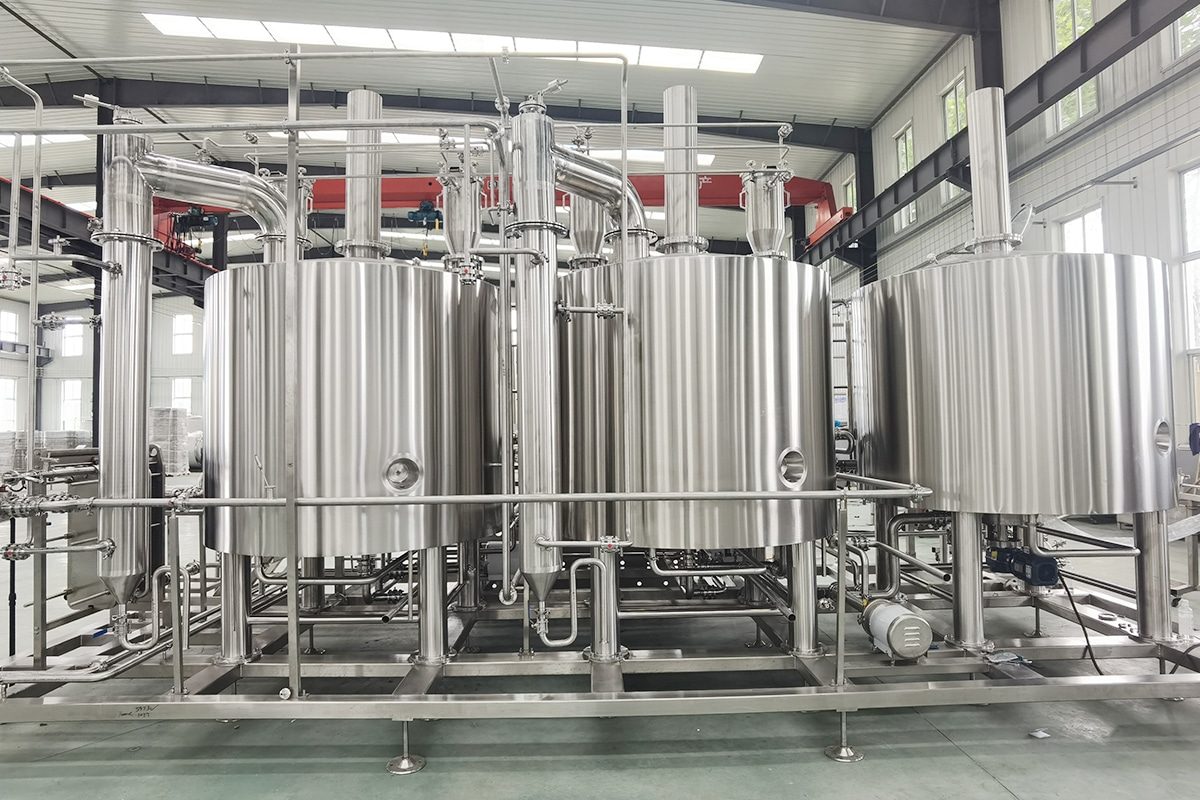
Get A Turnkey Brewery Solution
When embarking on the journey to build your brewery, navigating the myriad of equipment options can be overwhelming. That’s where ZYB Craft steps in as your trusted brewery solution provider. With our turnkey brewery solutions, we offer comprehensive support from concept to completion, simplifying the equipment selection process and ensuring that your brewery is equipped for success.
Our turnkey brewery solutions encompass every aspect of brewery setup, including brew house design, equipment procurement, installation, and commissioning. We work closely with you to understand your brewing goals, production requirements, and budget constraints, tailoring a solution that meets your specific needs.
From state-of-the-art brewhouses and fermentation vessels to packaging equipment, utilities, and quality control systems, ZYB Craft provides everything you need to build a world-class brewery operation. With our expertise and industry knowledge, you can trust ZYB Craft to deliver a turnkey brewery solution that exceeds your expectations and sets you on the path to brewing excellence.



